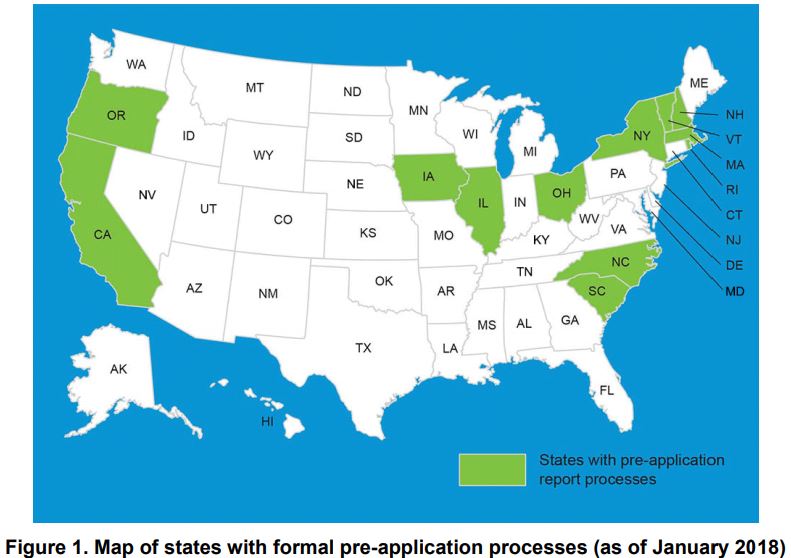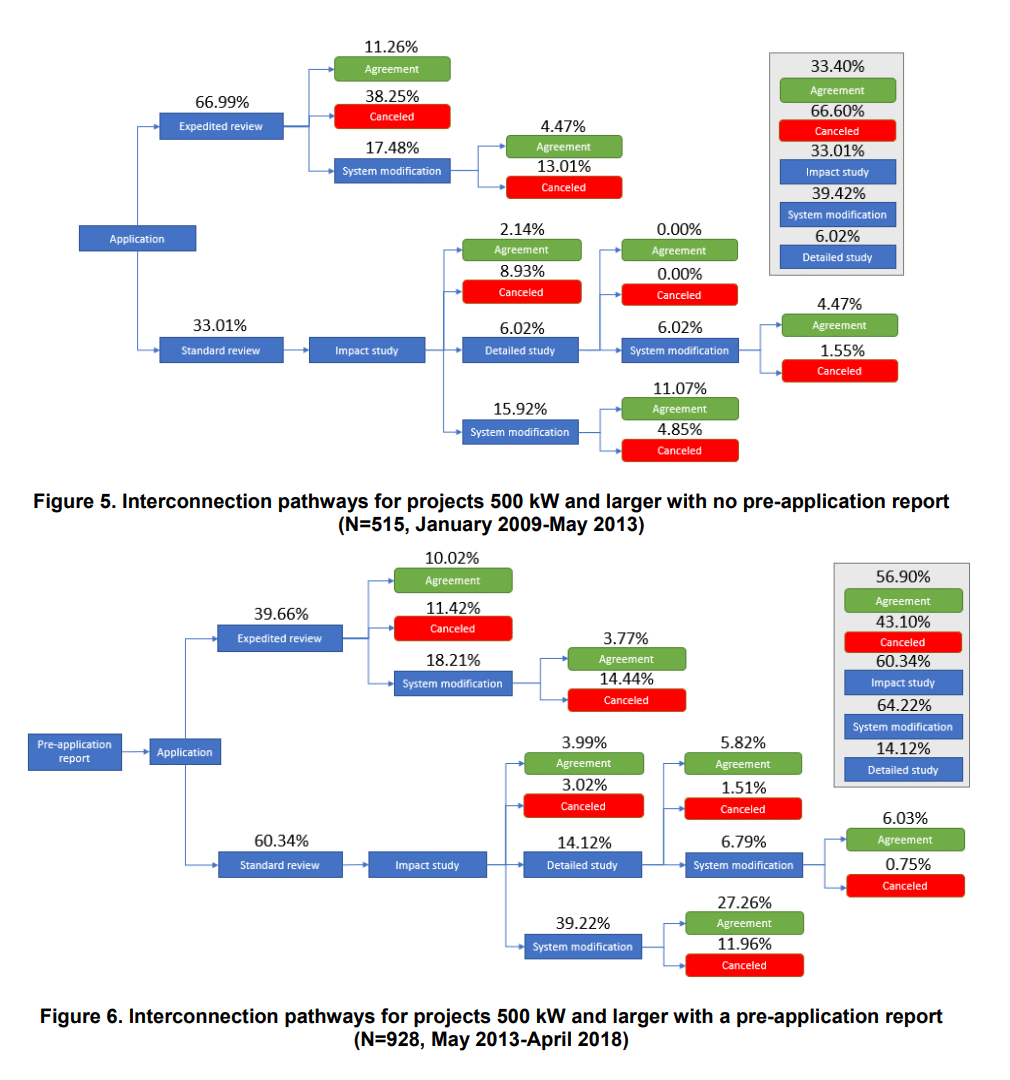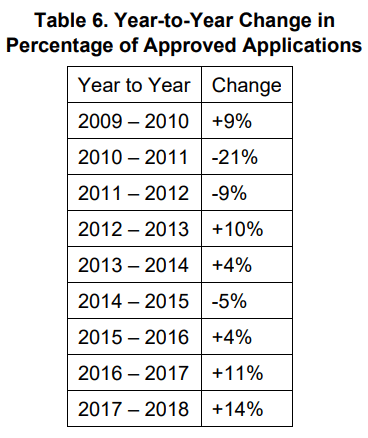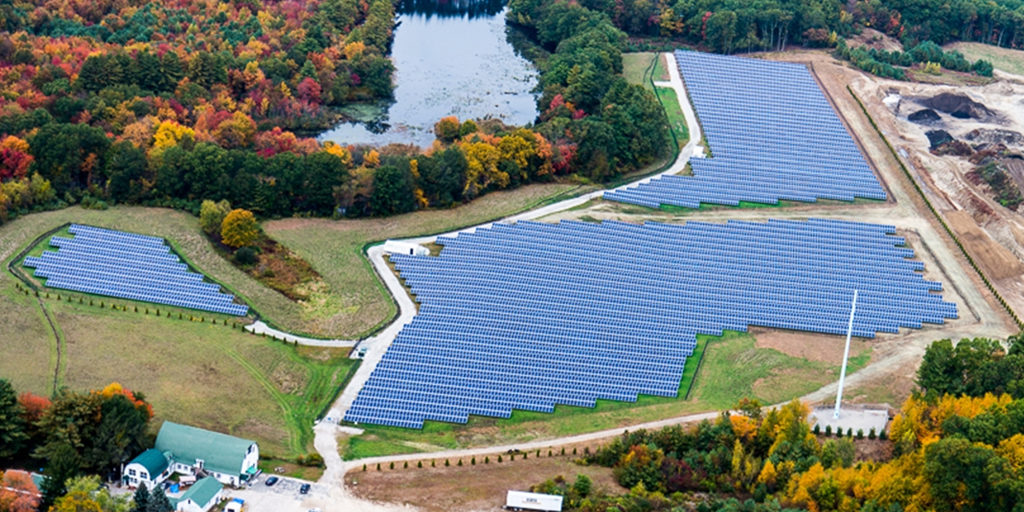In most places, in order to gain greater insight into the electricity traffic at any particular point on the power grid, one must request this data from the power company. Different places have different models of doing this, and though there is a bright spot in California (and an update that pv magazine will report on soon), and a few places where the data is publicly accessible for research, it mostly involves submitting an interconnection application that comes with a healthy cost.
As the number of distributed generation projects continues to increase, the interconnection application structure has shown weaknesses. With this, a pre-application process has been created – a report generated by the utility that gives just enough technical information about a particular location, without needing to do a full system analysis for a new solar project.

An analysis by the U.S. Department of Energy’s (DOE) National Renewable Energy Lab (NREL) found that Massachusetts adding a required pre-application to its interconnection process for all solar power projects 500 kWac and greater was correlated with a 25% increase in approvals.
The report, Evaluating the Role of Pre-Application Reports in Improving Distributed Generation Interconnection Processes (pdf), notes that there are many factors which could interfere with causation, such as the potential of technological advancements to allow for more solar interconnection, developers learning where to strategically connect, and price drops in solar costs making interconnection costs more bearable. However, NREL does suggest that the data represents a strong first step and is valuable as part of a larger analysis on the impact of pre-application reports.
On May 1, 2013, the Massachusetts Department of Public Utilities mandated a 500 kWac pre-application report process. For projects smaller than 500 kW, pre-application reports are an optional step in the interconnection process. The compiled data covers nearly 8,000 DG applications (~5.8 GW) submitted between January 2009 and April 2018.

The above charts show how solar projects flowed through the interconnection process in Massachusetts before (above chart) and after (below chart) the pre-application process. While there are many alterations where projects ended up inside of the map, the main driver of success was defined as projects that signed interconnection agreements successfully – and that value increased from 33% to almost 57%.
 Again, as these changes occurred during ongoing evolution of the whole of the solar industry as well, it is a challenge to tease out all the factors affecting project approval rates. However, data does show that application approval rates are continuing to increase.
Again, as these changes occurred during ongoing evolution of the whole of the solar industry as well, it is a challenge to tease out all the factors affecting project approval rates. However, data does show that application approval rates are continuing to increase.
Anecdotally, this author works as a developer in Massachusetts, and gains significant insight into whether or not to spend the money to develop a site further (one line diagram signed by a PE, system layout, and interconnection application costs) and submit.
For example, a recent pre-application came back with the following text, and stopped the project at this point:
“This area of the Eversource distribution system is at saturation and has a significant amount of DG that has either been interconnected or authorized to interconnect. There may also be several outstanding applications that are awaiting study. Recent studies suggest that additional interconnections would trigger the need for substantial upgrades that would impose significant financial burdens on proposed facilities. There are eleven (12) applicants totaling 30,200 kW queued ahead. At least three (3) separate cluster or group studies will be required to analyze all applicants. One (1) cluster study involving three (3) applicants is currently in progress. Extremely significant system upgrades, potentially a new bulk distribution substation, may be required to permit interconnection of all applicants.”
This content is protected by copyright and may not be reused. If you want to cooperate with us and would like to reuse some of our content, please contact: editors@pv-magazine.com.








By submitting this form you agree to pv magazine using your data for the purposes of publishing your comment.
Your personal data will only be disclosed or otherwise transmitted to third parties for the purposes of spam filtering or if this is necessary for technical maintenance of the website. Any other transfer to third parties will not take place unless this is justified on the basis of applicable data protection regulations or if pv magazine is legally obliged to do so.
You may revoke this consent at any time with effect for the future, in which case your personal data will be deleted immediately. Otherwise, your data will be deleted if pv magazine has processed your request or the purpose of data storage is fulfilled.
Further information on data privacy can be found in our Data Protection Policy.